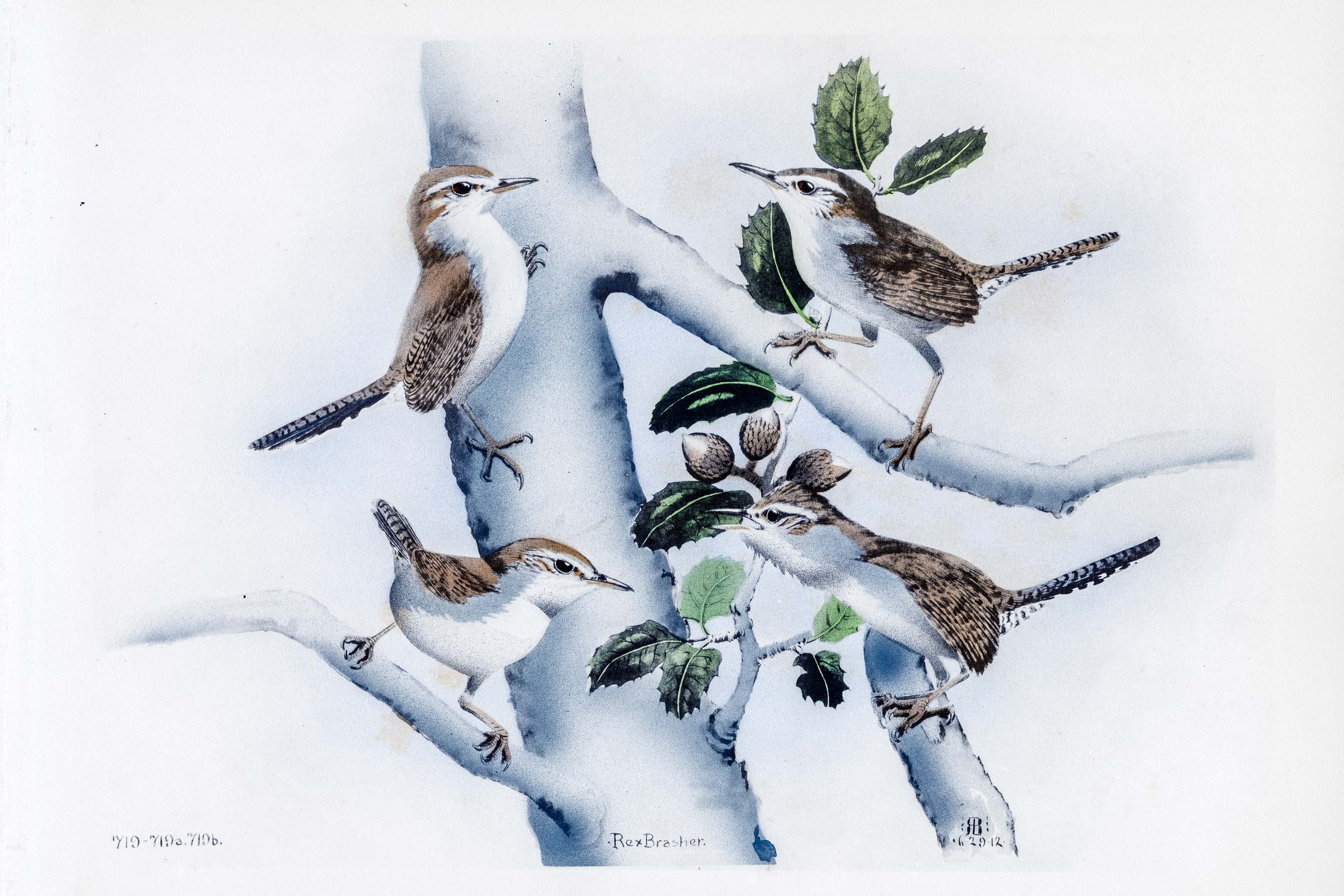
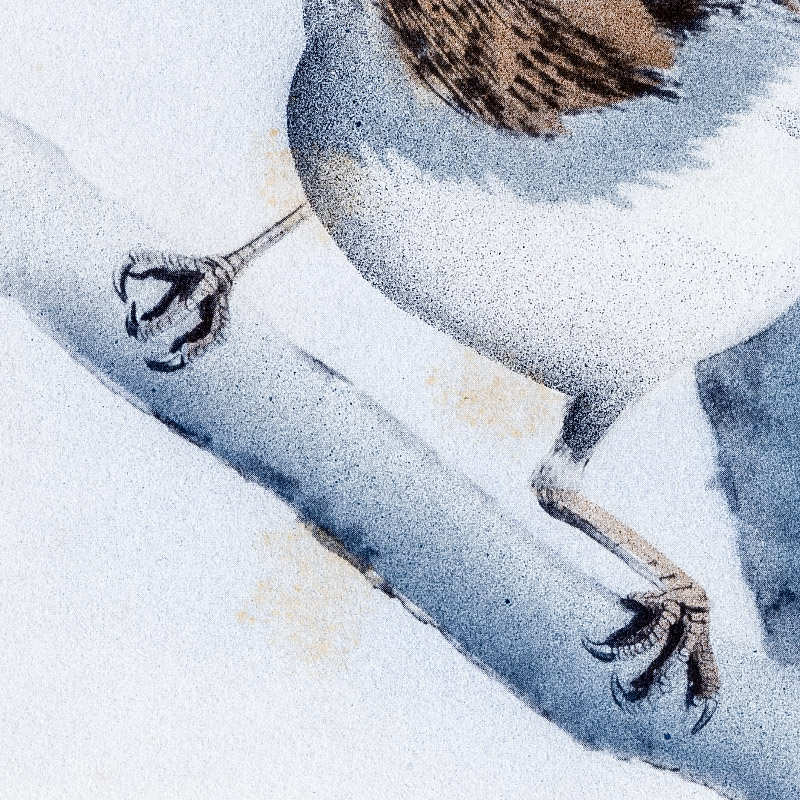
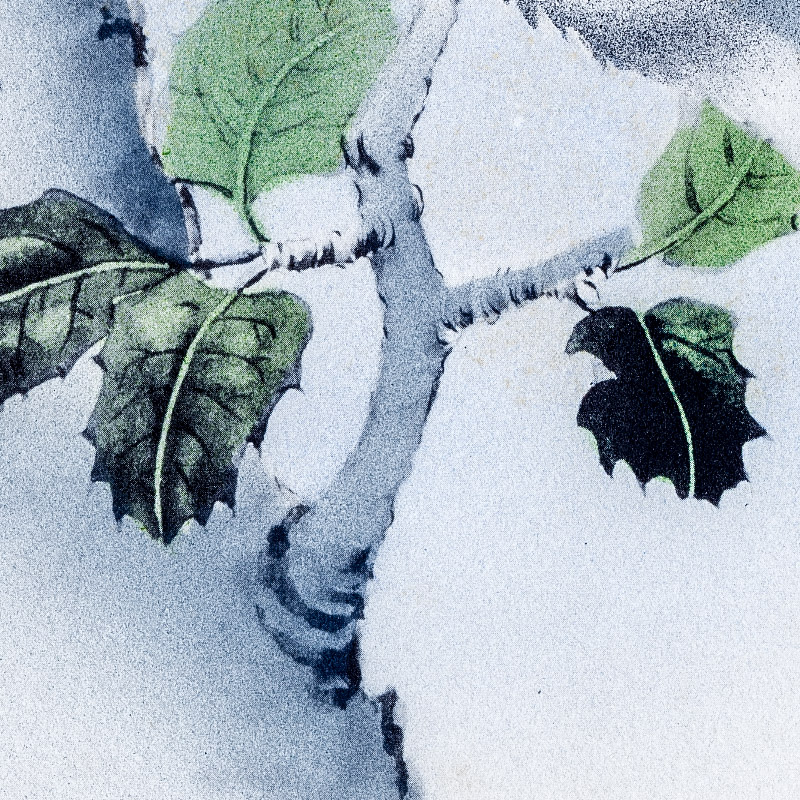
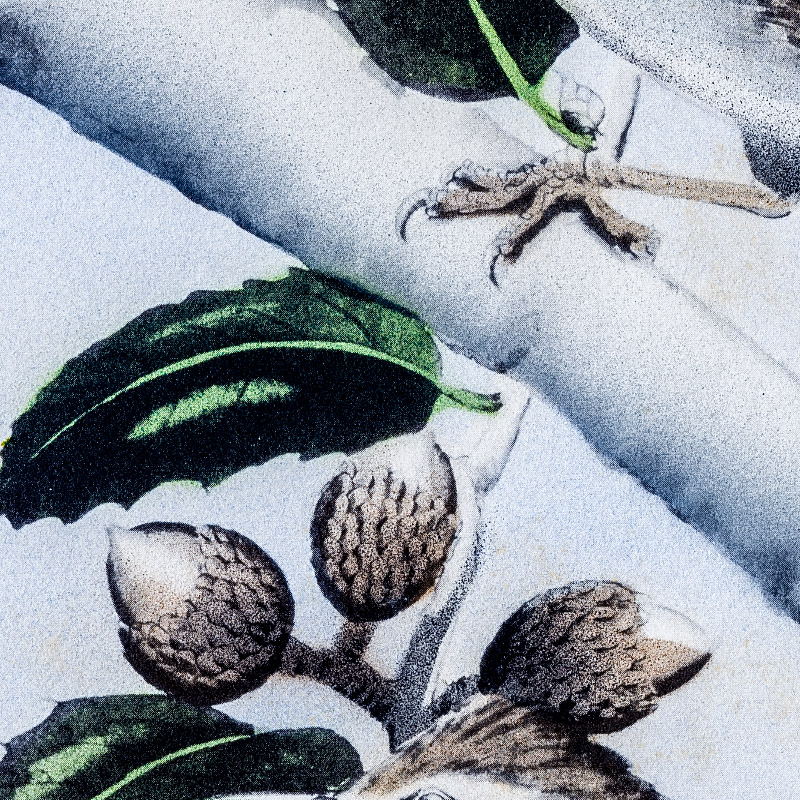
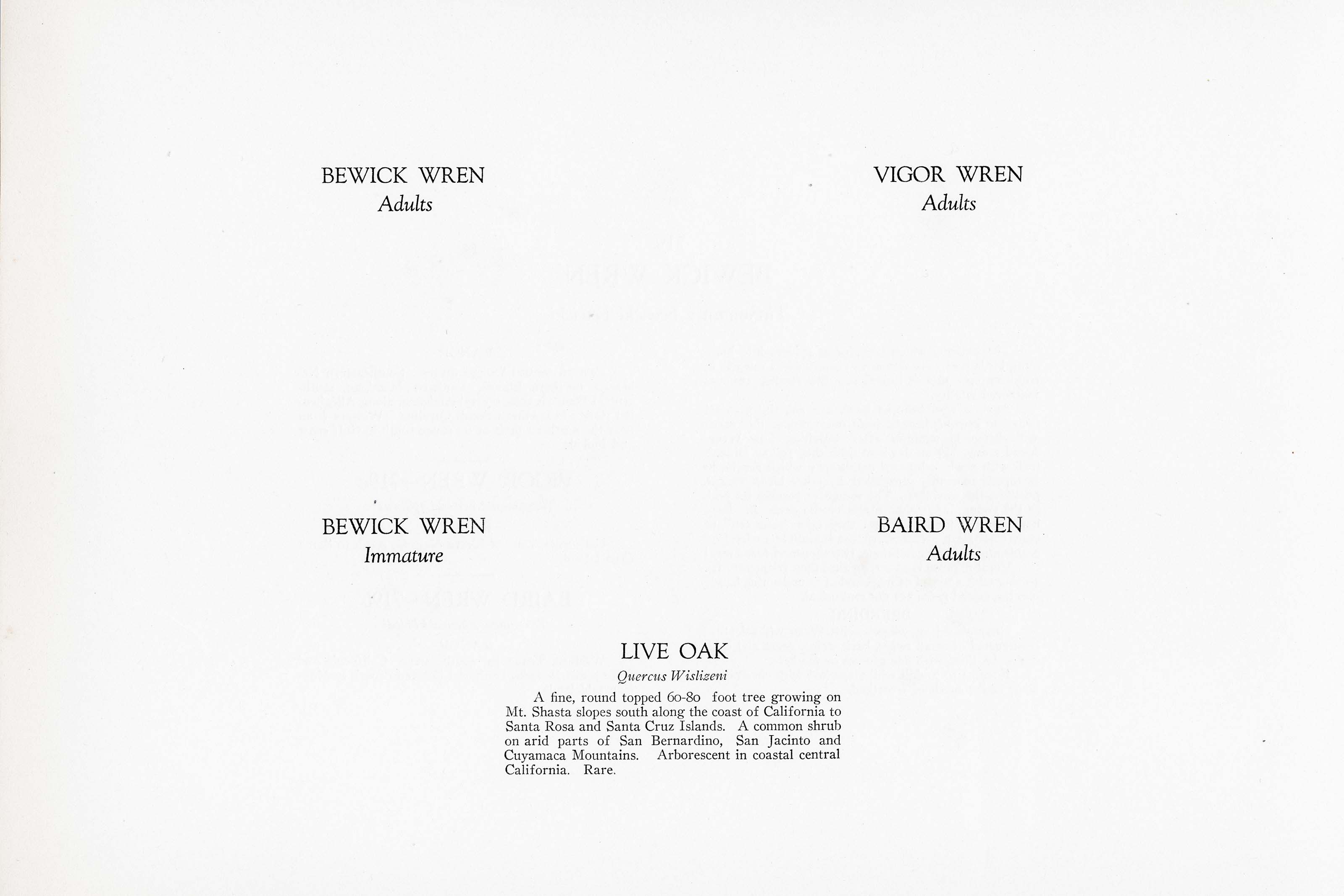
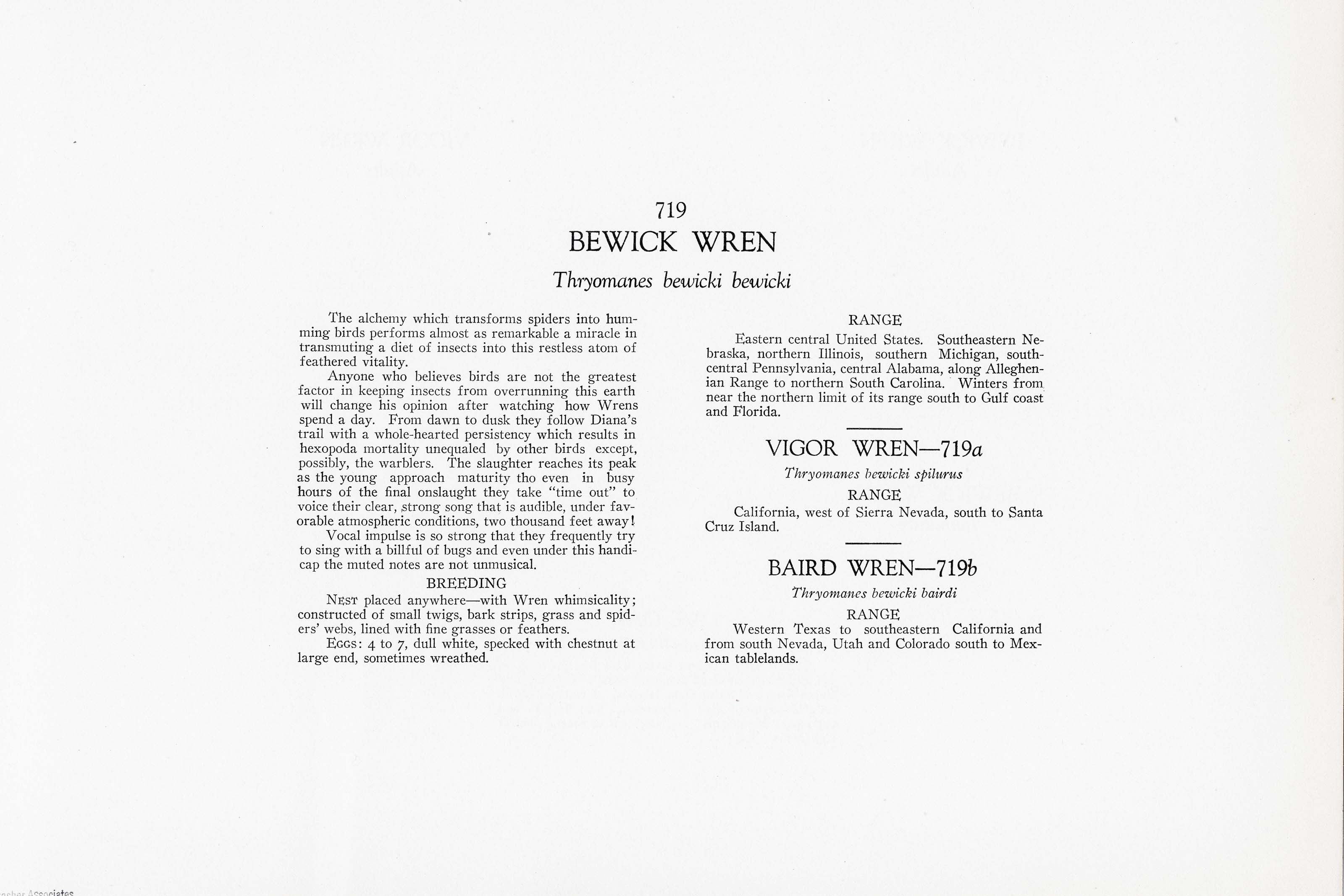

1912
1929
12
719-719a-719b
A team of dedicated board members, volunteers, and student interns has published every page in Volume 9. This volume includes 360 images of paintings and lyrical descriptions of birds, now available online for everyone to enjoy anywhere in the world. This is a monumental task. Each volume requires approximately 400 hours to photograph, edit, transcribe, catalog, and publish online. We need your support to complete this work.
If you're tech-savvy, have a good eye, are meticulous with details, and love structured data, please consider volunteering by emailing us at hello@rexbrasher.org.
We encourage all bird lovers and supporters to consider a monetary donation to support our mission to make Rex's work available for everyone. You can provide a one-time or recurring donation online.
The alchemy which transforms spiders into humming birds performs almost as remarkable a miracle in transmuting a diet of insects into this restless atom of feathered vitality.
Anyone who believes birds are not the greatest factor in keeping insects from overrunning this earth will change his opinion after watching how Wrens spend a day. From dawn to dusk they follow Diana's trail with a whole-hearted persistency which results in hexopoda mortality unequaled by other birds except, possibly, the warblers. The slaughter reaches its peak as the young approach maturity tho even in busy in busy hours of the final onslaught they take "time out" to voice their clear, strong song that is audible, under favorable atmospheric conditions, two thousand feet away!
Vocal impulse is so strong that they frequently try to sing with a billful of bugs and even under this handicap the muted notes are not unmusical.
NEST placed anywhere — with Wren whimsicality; constructed of small twigs, bark strips, grass and spiders' webs, lined with fine grasses or feathers.
EGGS: 4 to 7, dull white, specked with chestnut at large end, sometimes wreathed.
Eastern central United States. Southeastern Nebraska, northern Illinois, southern Michigan, south-central Pennsylvania, central Alabama, along Alleghenian Range to northern South Carolina. Winters from near the northern limit of its range south to Gulf coast and Florida.
California, west of Sierra Nevada, south to Santa Cruz Island.
Western Texas to southeastern California and from south Nevada, Utah and Colorado south to Mexican tablelands.
A fine, round topped 60–80 foot tree growing on Mt. Shasta slopes south along the coast of California to Santa Rosa and Santa Cruz Islands. A common shrub on arid parts of San Bernardino, San Jacinto and Cuyamaca Mountains. Arborescent in coastal central California. Rare.